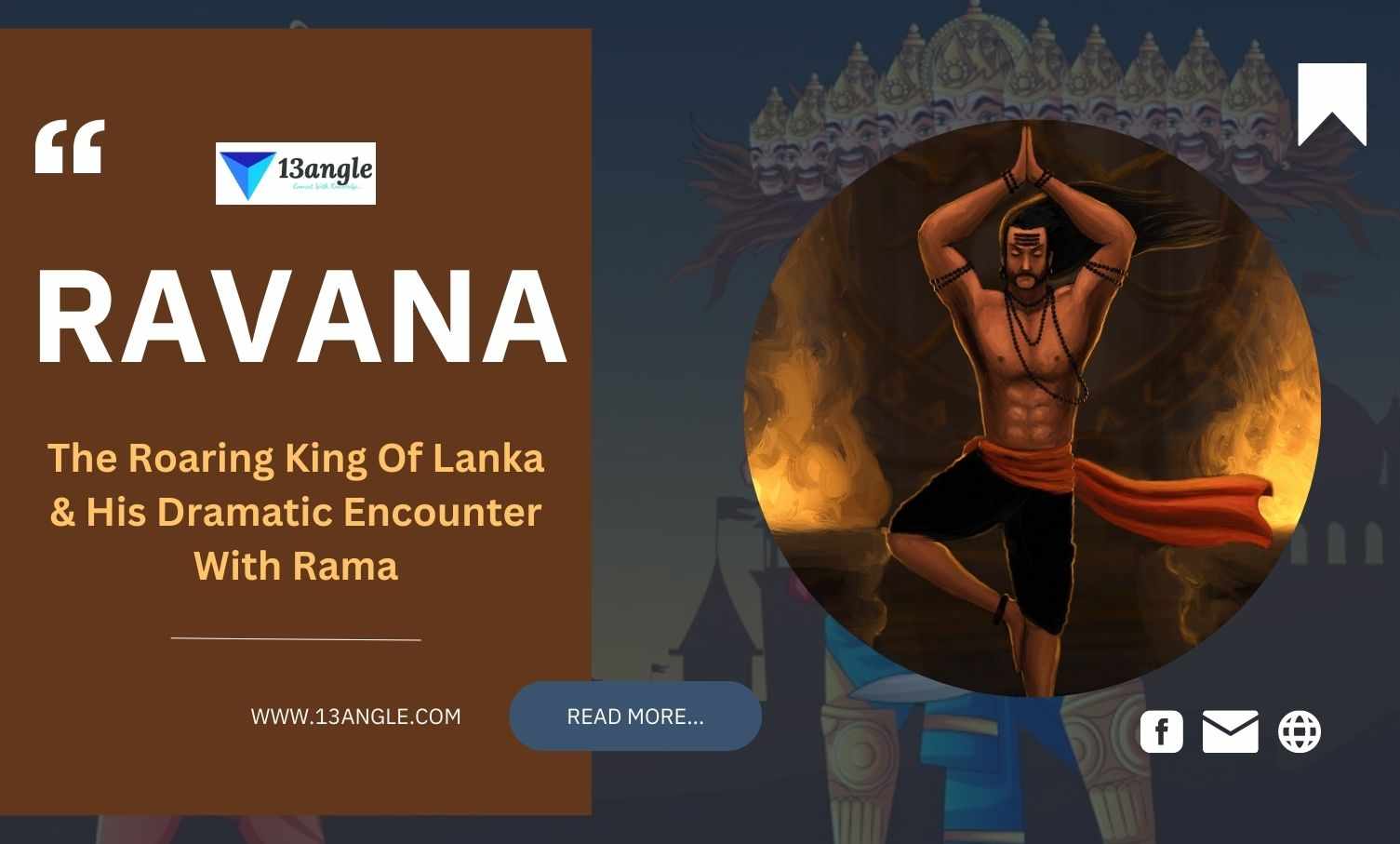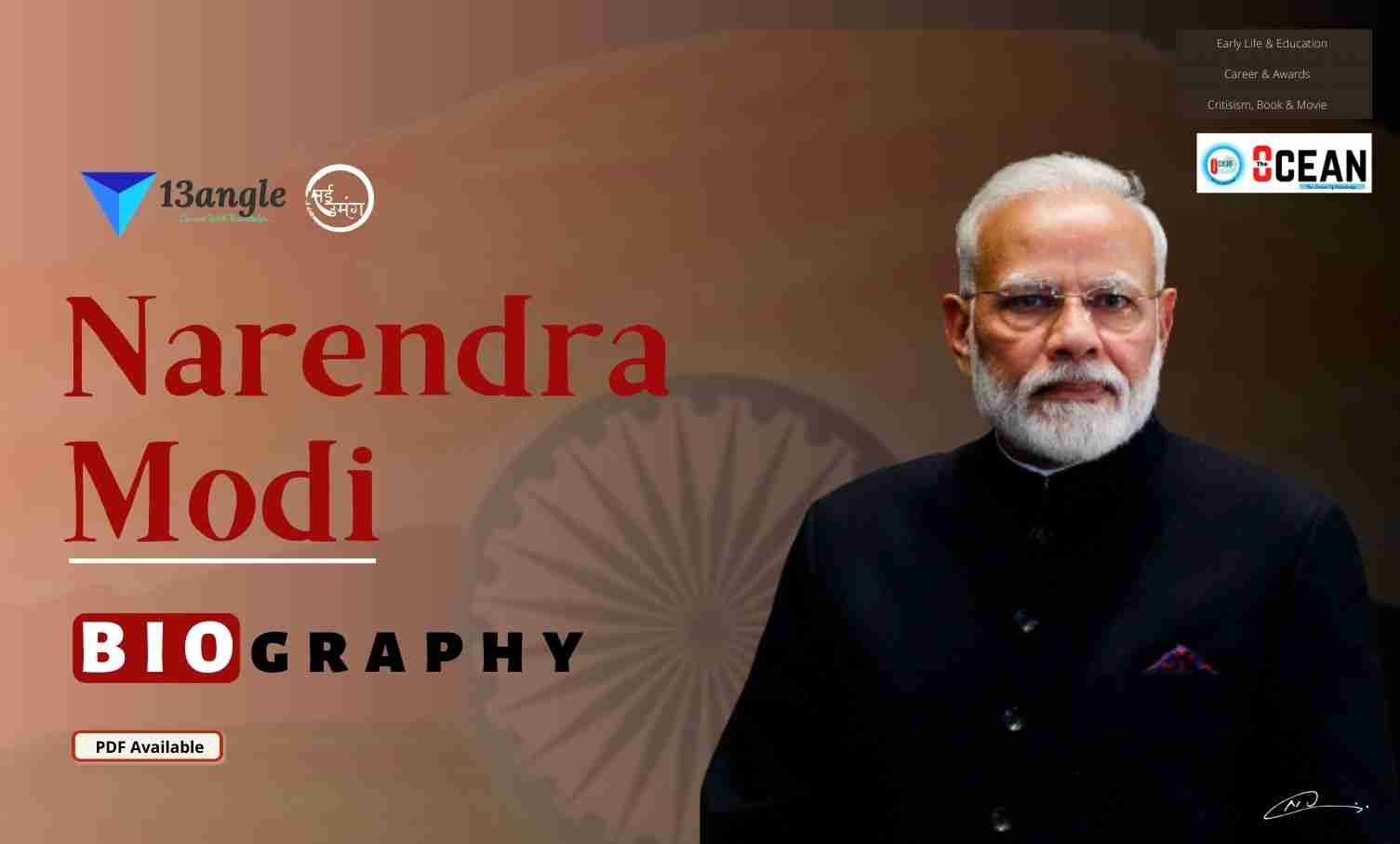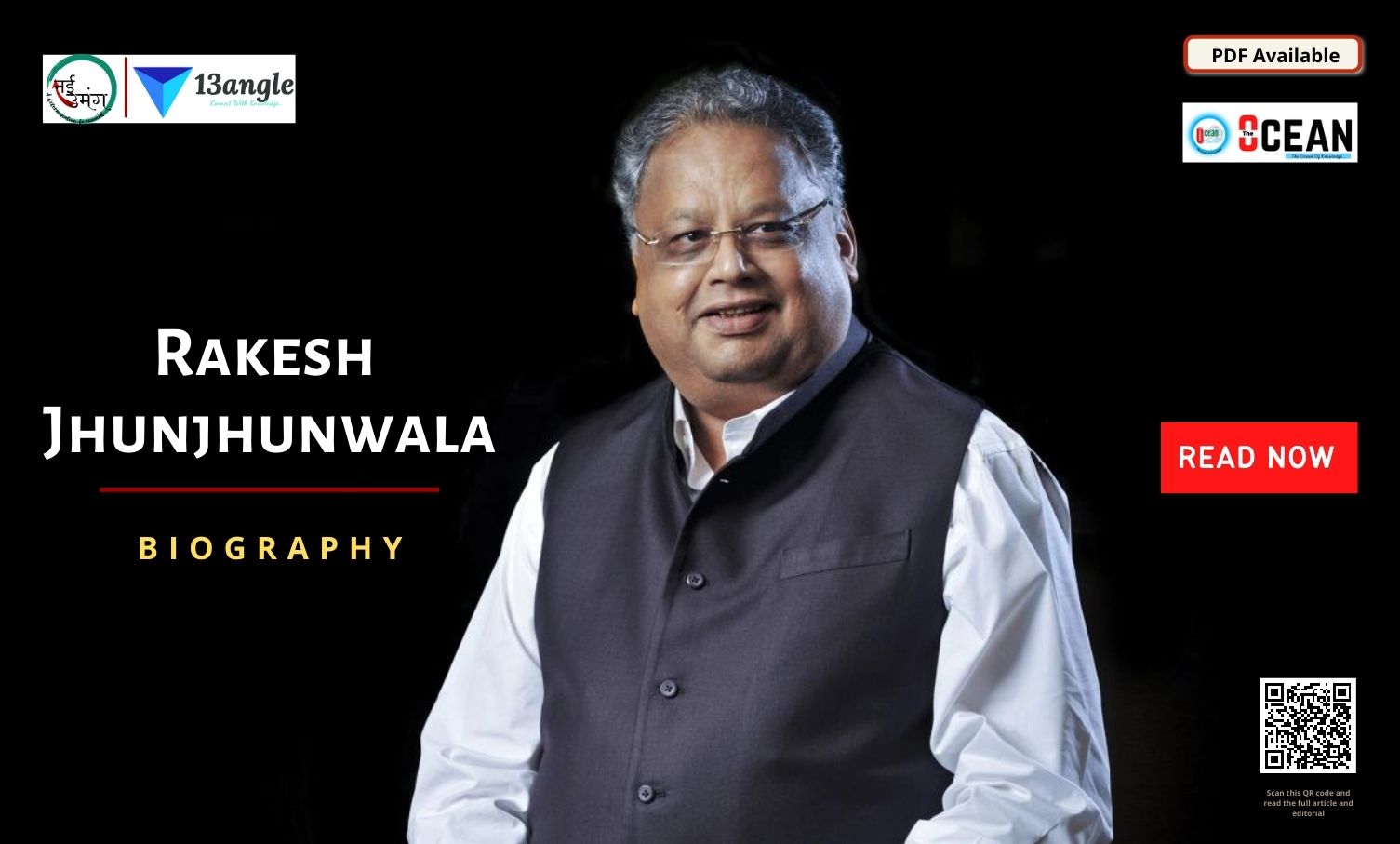
Personal Profile
Born | 12 August 1919, Ahmadabad |
| Died | 30 December 1971, Halcyon Castle Trivandrum, Thiruvananthapuram |
| Parent(s) | Ambalal Sarabhai (father) |
| Awards | Padma Bhushan (1966), Padma Vibhushan (posthumously) (1972) |
| Spouse | Mrinalini Sarabhai (m. 1942) |
| Children | Mallika Sarabhai (daughter), Kartikeya Sarabhai (son) |
| Alma Mater | The University of Cambridge (BA, Ph.D.) |
| Known for | The Indian space program, Indian Institute of Management Ahmedabad |
Introduction
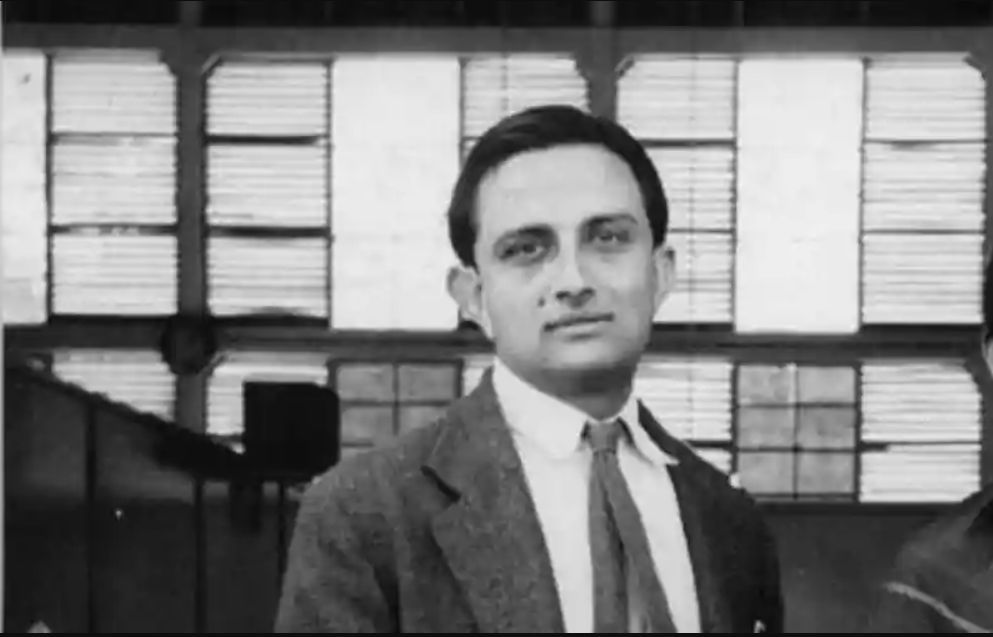
Vikram Sarabhai or Vikram Ambalal Sarabhai was a rare combination of a scientist, an innovator, industrialist, and visionary.
He was one of the greatest scientists produced by India and was known as the father of the Indian space program.
Early Life
- Vikram Sarabhai was born on 12 December 1919 in Ahmedabad. He enjoyed a privileged childhood and the means to pursue all the education he wanted. From a young age, Sarabhai developed a deep interest in science and mathematics. He was a very curious child who loved to explore life. After completing his primary education in India he moved abroad for further studies.
Sarabhai’s Family
The Sarabhai family is a major business family in India belonging to the Shrimal Jain community. Its twentieth-century doyen Sheth Ambalal Sarabhai was a Gujarati industrialist. He had five daughters and three sons who were involved in the family business as well as the Indian independence movement. Vikram Sarabhai was one of the eight children of Ambalal and Sarla Devi. After India’s freedom, the family remained involved in developmental tasks undertaken by the government of India.
Ambalal Sarabhai was a prominent mill owner and also interested in philanthropic activities. His wife Sarladevi Sarabhai was impressed by Maria Montessori’s philosophy and in the year 1922, Montessori sent E. M. Standing to India for the homeschooling of Sarabhai children.
Sarabhai Enterprises branched out after India’s independence and many pioneer ventures were made in fields dominated by foreign companies. The manufacture of drugs and pharmaceuticals, chemicals and intermediates, dyes and pigments, industrial and household detergents, soaps and cosmetics, industrial packaging and containers, and later engineering and electronic products.
Education
Sarabhai matriculated from the Gujarat College in Ahmedabad after passing the Intermediate Science examination.
After that, he moved to England and joined St. John’s College, University of Cambridge. He received the Tripos in Natural Sciences from Cambridge in 1940.
With the escalation of the Second World War, Sarabhai returned to India and joined the Indian Institute of Science in Bangalore, and began research in cosmic rays under the guidance of Sir C. V. Raman, a Nobel Prize winner.
He returned to Cambridge after the war in 1945 and was awarded a Ph.D. degree in 1947 for his thesis titled Cosmic Ray investigation in Tropical Latitudes.
Awards
Shanti Swarup Bhatnagar Award (1962)
Padma Bhushan (1966)
Padma Vibhushan, posthumous (after-death) (1972)
Distinguished Positions
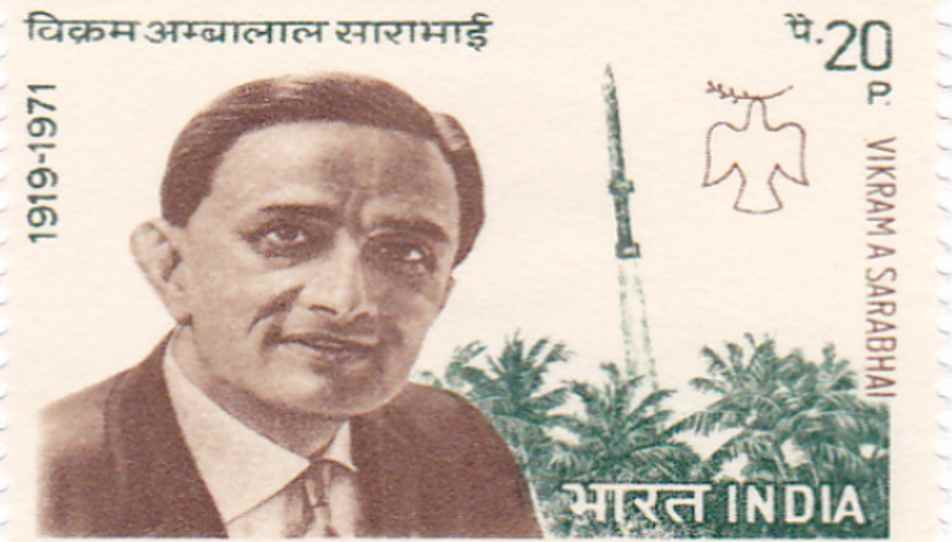
President of the Physics section, Indian Science Congress (1962)
President of the General Conference of the I.A.E.A., Vienna (1970)
Chairman of the Atomic Energy Commission of India (1966–1971)
Vice-President, Fourth UN Conference on ‘Peaceful uses of Atomic Energy’ (1971)
Founder and Chairman (1963–1971), Space Applications Centre
Honors

The Vikram Sarabhai Space Centre, (VSSC), a research institute specializing in solid and liquid propellants for rockets located in Thiruvananthapuram (Trivandrum), capital of Kerala state, is named in his memory.
Indian Postal Department released a commemorative Postal Stamp of his first Death Anniversary (30 December 1972)
In 1974, the International Astronomical Union at Sydney decided that a Moon Crater BESSEL in the Sea of Serenity will be known as the Dr. Sarabhai Crater.
Dr.Vikram Sarabhai had said,
“There are some who question the relevance of space activities in a developing nation. To us, there is no ambiguity of purpose…. We are convinced that if we are to play a meaningful role nationally, and in the community of nations, we must be second to none in the application of advanced technologies to the real problems of man and society”.
- Even today, the Indian space program is driven by the vision of Dr.Vikram Sarabhai. The unveiling of the bust of Dr.Sarabhai at Antariksh Bhavan, from where the Indian space program is directed, is a tribute to this great visionary. The bust was carved in bronze by famous sculptor Mr. Kanayi Kunhiraman.
Achievements
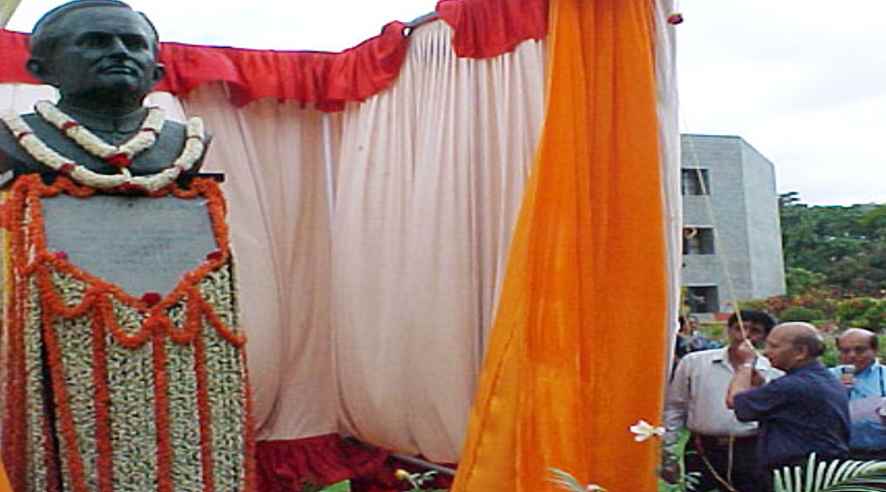
Dr Sarabhai was considered the Father of the Indian space program. He was a great institution builder and established or helped to establish a large number of institutions in diverse fields. He was instrumental in establishing the Physical Research Laboratory (PRL) in Ahmedabad. After returning from Cambridge to an independent India in 1947, he persuaded charitable trusts controlled by his family and friends to endow a research institution near home in Ahmedabad. Thus, Vikram Sarabhai founded the Physical Research Laboratory (PRL) in Ahmedabad on November 11, 1947. He was only 28 at that time. Sarabhai was a creator and cultivator of institutions and PRL was the first step in that direction. Vikram Sarabhai served on PRL from 1966 to 1971.
He was also Chairman of the Atomic Energy Commission. He along with other Ahmedabad-based industrialists played a major role in the creation of the Indian Institute of Management, Ahmedabad.
=> Some of the most well-known institutions established by Dr Sarabhai are:
- Physical Research Laboratory (PRL), Ahmedabad.
- Indian Institute of Management (IIM), Ahmedabad.
- Community Science Centre, Ahmedabad.
- Darpan Academy for Performing Arts, Ahmedabad (along with his wife).
- Vikram Sarabhai Space Centre, Thiruvananthapuram.
- Space Applications Centre, Ahmedabad (This institution came into existence after merging six institutions/centres established by Sarabhai).
- Faster Breeder Test Reactor (FBTR), Kalpakkam.
- Variable Energy Cyclotron Project, Calcutta.
- Electronics Corporation of India Limited (ECIL), Hyderabad.
- Uranium Corporation of India Limited (UCIL), Jaduguda, Bihar.
C. V. Raman And Sarabhai
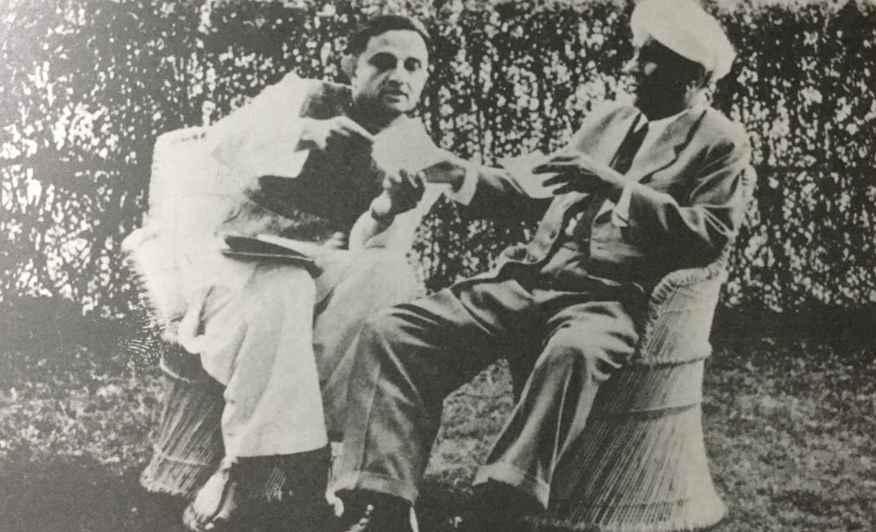
- In 1952, Sarabhai mentor Dr. C V Raman would be the one who laid the foundation of the new PRL campus. While most of us still struggle to find our purpose in our 20s, by 28, Dr. Sarabhai passionately advocated for the setting up of a space agency in India.
Sarabhai And A.P.J. Abdul Kalam
The First Meeting of Vikram Sarabhai and Abdul Kalam.
Professor MGK Menon of Tata Institute of Fundamental Research (TIFR) saw Dr. Kalam’s work on the Nandi hovercraft in Bangalore. He subsequently invited him for an interview for the position of rocket engineer at INCOSPAR. It was during this interview that Dr. Kalam met ‘a heroic figure’, Dr. Vikram Sarabhai.
As the meeting had come his way quite unexpectedly, Abdul Kalam was not able to prepare. But Dr. Sarabhai, Professor Menon, and Mr. Saraf (deputy secretary of the Atomic Energy Commission) made him feel ‘warmth and graciousness’ in the room. Vikram Sarabhai probed into Kalam’s thought processes to gauge the potential for his growth rather than his current storehouse of knowledge.
“In my professional life, this was the first time that I had come across someone of his stature who seemed ready to envelop my thoughts and dreams into his larger vision for the country’s space program.” Dr. APJ.Abdul Kalam Quotes on his first meeting with Dr. Vikram Sarabhai.
Invention
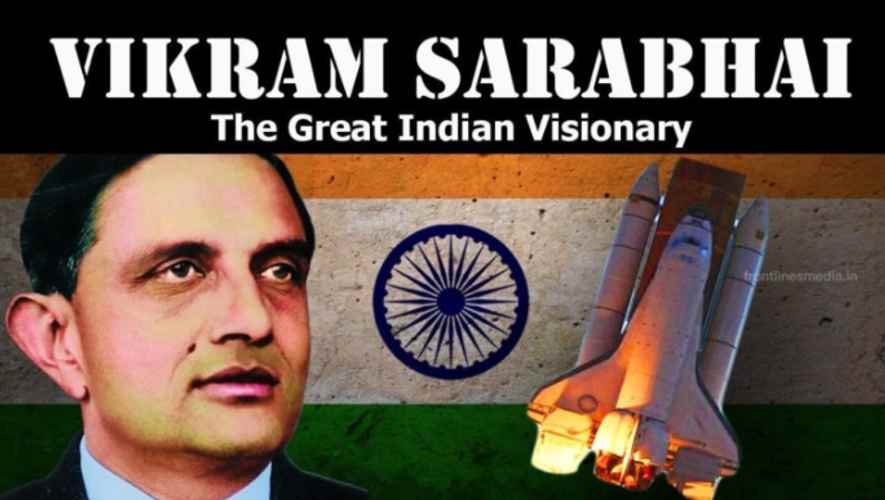
Dr. Sarabhai started a project that would lead to the building of India’s first artificial satellite orbiting Earth. Launched in July 1976, Aryabhata was launched four years after the death of Dr. Sarabhai on the Kapustin Yar a Russian rocket. It was named after an Indian astronomer and mathematician.
Sarabhai started a project for the fabrication and launch of an Indian satellite. As a result, the first Indian satellite, Aryabhata, was put into orbit in 1975 from a Russian cosmodrome.
Not only is his contribution to building up India’s Scientific and Technological base immense, but also his endeavor to nurture & develop India’s human capital & his interest in art & humanities has seen some fine institutes in India being set up to work towards these goals.
Documentary About Vikram Sarabhai
‘Vikram Sarabhai’ documentary directed by Homi D. Sethna. Biographical film on the life and work of Dr.Vikram Sarabhai a well-known nuclear physicist.
An interesting documentary was made on the life and works of one of the pioneers of Indian Science, Dr. Vikram Sarabhai.
Rocket Boys

This web series, based on the lives of nuclear physicists Homi Bhabha and Vikram Sarabhai, has been created by Nikkhil Advani, Roy Kapur Films, and Emmay Entertainment, directed by Abhay Pannu and produced by Siddharth Roy Kapur, Monisha Advani, Madhu Bhojwani, and Nikkhil Advani. It stars Ishwak Singh and Jim Sarbh in lead roles.
Death
- On 30 December 1971, Sarabhai was to review the SLV design before his departure for Bombay the same night. He had spoken to A.P.J. Abdul Kalam on the telephone. Within an hour of the conversation, Sarabhai died at the age of 52 due to cardiac arrest in Trivandrum (now Thiruvananthapuram). His body was cremated in Ahmedabad.
100th Anniversary
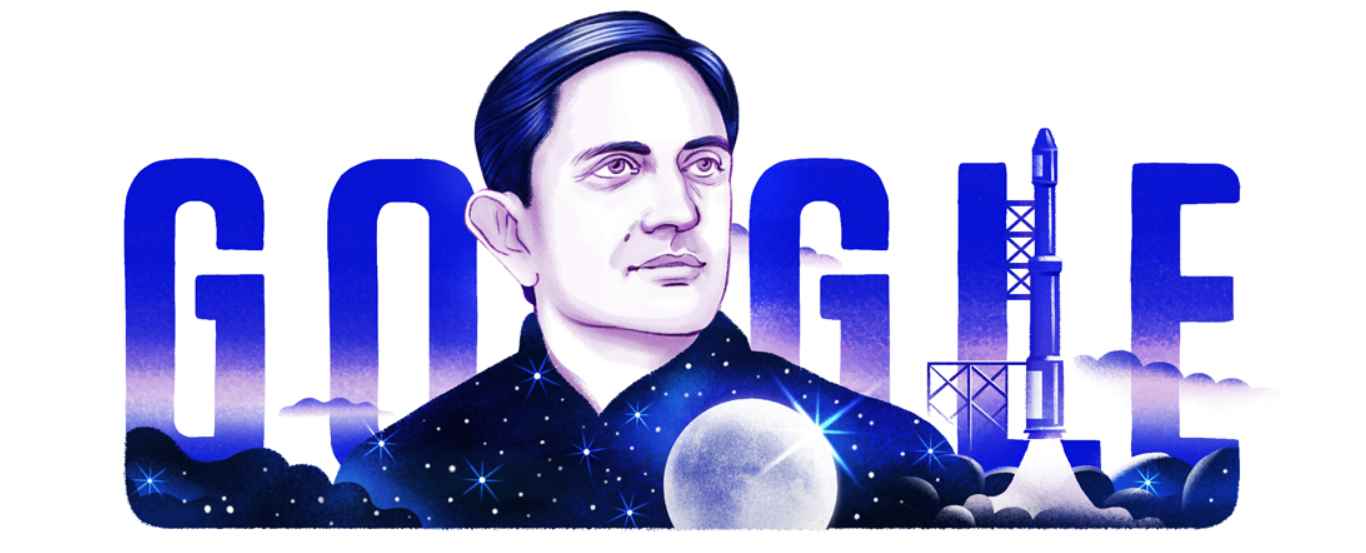
In 2020, ISRO paid tribute to his birth centenary by announcing that the Chandrayaan 2 Orbiter has captured the moon images of ‘Sarabhai Crater’. With a depth of around 1.7 km, around 250 to 300 kilometers east of this Crater is where the Apollo 17 and Luna 21 Missions had landed.
Doodle, illustrated by Mumbai-based guest artist Pavan Rajurkar, celebrates the 100th birthday of award-winning Indian physicist, industrialist, and innovator Vikram Sarabhai,
On July 22, ISRO launched the first lander-rover module from India to the moon for study. The lander that is carrying the rover has been named Vikram after the ISRO founder.
ISRO announced an award in the name of Vikram Sarabhai.
Top 13 Interesting Facts About Vikram Sarabhai
Vikram Sarabhai’s most significant contribution to India was the Indian Space Research Organization (ISRO) which he helped to establish in 1969. The major objective of the organization is to advance space technology and apply it for national benefits.
Sarabhai was fully supported in his ventures by Dr. Homi Bhabha who was a pioneer in the field of nuclear research in India. Bhabha helped Sarabhai in setting up the first rocket launching station at Thumba on the coast of the Arabian sea. The inaugural flight was launched on 21st November 1963.
He founded the Indian Space Research Organization (ISRO) which eventually became the largest government space agency in the world.
This great scientist set up Operations Research Group (ORG), the first market research organization in India.
Vikram Sarabhai is the renaissance man of Indian Science.
Major Institution building efforts of Vikram Sarabhai is 36.
Vikram Sarabhai also played a key role in developing management education is India by founding the Indian Institute of Management.
Even today, the Indian space program is driven by the vision of Dr.Vikram Sarabhai.
Along with his wife Mrinalini Sarabhai, he founded the Darpana Academy of Performing Arts.
His Doctoral Student is Udupi Ramachandra Rao.
Former World Quiz Champion Vikram Joshi was named after him.
A Space Museum was dedicated to him at BM Birla Science Centre Hyderabad on 26 July 2019. The museum was curated by Pranav Sharma.
Gurudev Rabindranath Tagore who, having spotted the spark of genius in the young Sarabhai aged 16 years, wrote a letter of recommendation to the authorities of Cambridge University for enrolment of Sarabhai into St.Johns College, Cambridge, which he joined in 1936 and completed his natural science tripos in 1939.
Some FAQs Or Also Ask Question
How did Vikram Sarabhai die?
On 30 December 1971 Sarabhai died at the age of 52 due to cardiac arrest in Trivandrum.
What was invented by Vikram Sarabhai?
Dr. Sarabhai started a project that would lead to the building of India’s first artificial satellite orbiting Earth. He also started a project for the fabrication .
Who is known as the father of space in India?
Dr. Vikram Sarabhai is the father of the Indian space program.
What is the role of Vikram Sarabhai in ISRO?
Vikram Sarabhai’s most significant contribution to India was the Indian Space Research Organization (ISRO) which he helped to establish in 1969.
Movies based on Vikram Sarabhai?
Vikram Sarabhai’ documentary directored by Homi D. Sethna. ’Rocket Boys’ has been created by Nikkhil Advani, Roy Kapur Films and Emmay Entertainment, directed by Abhay Pannu.

